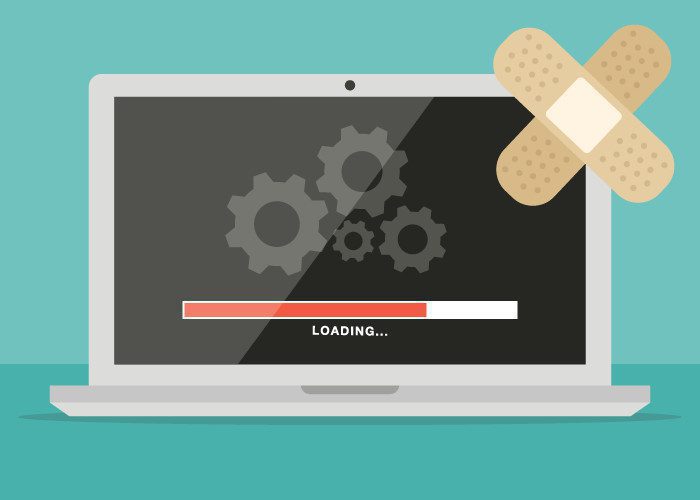Vulnerabilities in IT infrastructure including OS systems and middleware components can put companies at risk from cyber-attacks and data loss. This is why it’s so important to keep on top of your patch management process and leave no room for vulnerabilities that can affect the systems’ functionality and security. Common problems that can happen as a result of missed patching and recurrent maintenance of the infrastructure are falling victim to ransomware, fraud, data, and financial loss.
What is patch management?
Patch management of software is a code that is created and deployed by the IT services provider to fix certain bugs that can leave the systems exposed to deliberate breaches and theft. The general patching process that takes place in most enterprises is keeping the operating systems up to date and reviewing the infrastructure every once in a while to assess what components have been rendered unusable. Patch management can be performed in-house or taken over by a third-party company that specializes in patch deployment and keeping the whole computer network of a client up to date as well as fully secure from loss of data and system functionality. An IT services provider usually handles the process by using patching tools that give them visibility over the entire system and the missing patches. This way, manual or automated deployment can be performed right away according to schedule or when new bugs appear after an incident such as a power outrage. Patch management by third-party companies is offered as a solution, run and streamlined from a centralized server location.
Why is patching middleware components so important?
Patching software and infrastructure is a necessary process that ensures all vulnerabilities are resolved timely before any damage has been done by malicious actors. A common practice by companies is to automate their patching and perform updates only at OS level and their software components, thus missing a very important layer of their infrastructure. Middleware is a crucial component in the software functionality that supports the entire application process. This includes the software libraries, database systems, frameworks, and other important elements, which are also subject to vulnerabilities and potential breaches in security. Patching for middleware components is a fairly new practice, requiring a lot of technical skill and understanding of the software complexities from a maintenance and deployment viewpoint.
How does manual patching keep your systems secure?
Regular patching ensures that your organization is safe from security breaches and loss of valuable corporate data. The reason why many companies become exposed to cyber crime when they have poor patch management in place is the security vulnerabilities that occur after new updates are released. When software and operating systems introduce new features or fixtures, hackers wait prepared to attack at the right moment when updates have not yet been deployed. This delay can leave a company in a very vulnerable position that enterprises usually want to avoid by accomodating IT teams to perform patch management timely and effectively. Patch management is a very important job and responsibility shared by one or more teams that delegate the tasks around monitoring the systems and applying the updates in the right place at the right time.
Manual and automated patching
A lot of companies that carry out their patch management in-house go for the automated option that requires minimum monitoring and customization. One may think that automated deployment is the better alternative since it reduces the likelihood of missed patches and unwanted system vulnerabilities. This is definitely the case with enterprises that lack the competencies to perform manual patching, requiring more advanced customization and round-the-clock infrastructure monitoring. Manual patching is usually performed by IT specialists that manage cloud infrastructure and use a more complex configuration of updates for many individual components and systems allocated to different cloud tenants. This process also includes an important analytical step that is carried out to assess the impact of new patches before they get deployed in place of obsolete ones. There are multiple other steps that go within the manual patching procedure allowing IT providers to exercise better control over their clients’ systems, and ultimately, ensure no gaps of security in the entire company infrastructure of every client.
To find out more about our Patching Solution for OS and Middleware, click here or get in contact with our team for more information!






